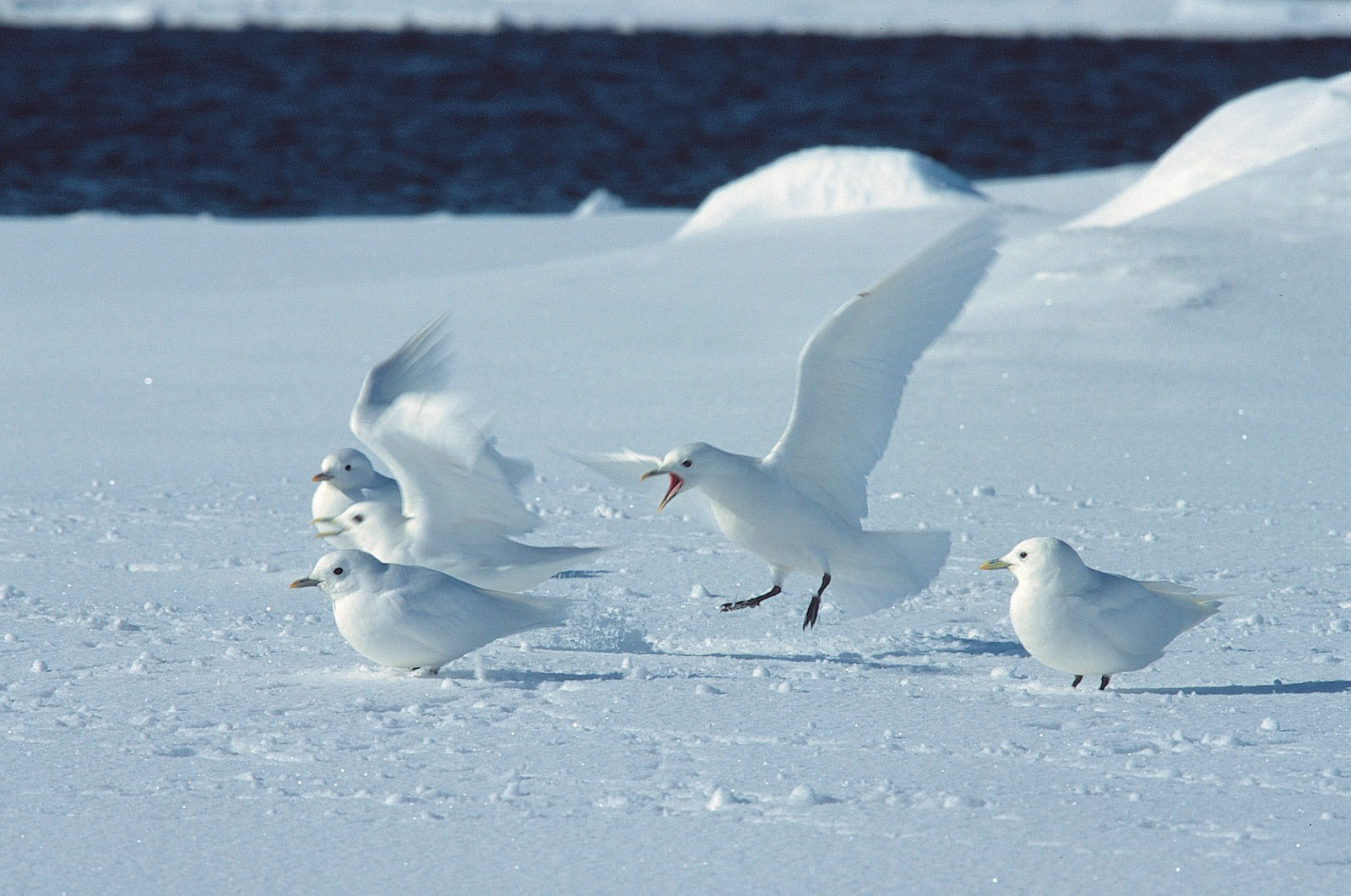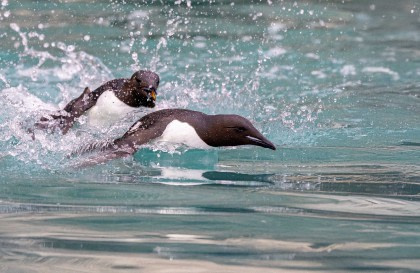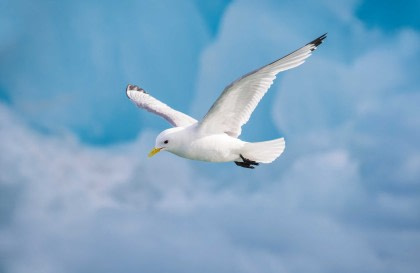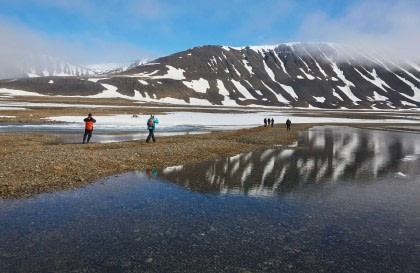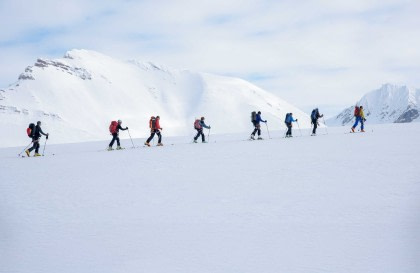Pictures, places, and species facts about 29 Arctic birds
There’s no question that the Arctic is home to some of the world’s most majestic mammals of land and sea. Nevertheless, Arctic bird life easily holds its own against these larger neighbors, claiming numerous exotic species prized by birders all over the planet.
To complement our Antarctic bird life article, here are 29 Arctic birds and seabirds you might see during your expedition cruise. Detailed here are facts about the following Arctic species:
- Puffin
- Cormorant
- Arctic tern
- Common eider
- King eider
- White-tailed eagle
- Kittiwake
- Fulmar
- Snow bunting
- Northern gannet
- Sanderling
- Black guillemot
- Brünnich’s guillemot
- Little auk
- Arctic skua
- Long-tailed skua
- Ptarmigan
- Great northern diver
- Red-throated diver
- Glaucous gull
- Lesser black-backed gull
- Great black-backed gull
- Ivory gull
- Red phalarope (grey phalarope)
- Pink-footed goose
- Barnacle goose
- Brant goose
- Razorbill
- Turnstone
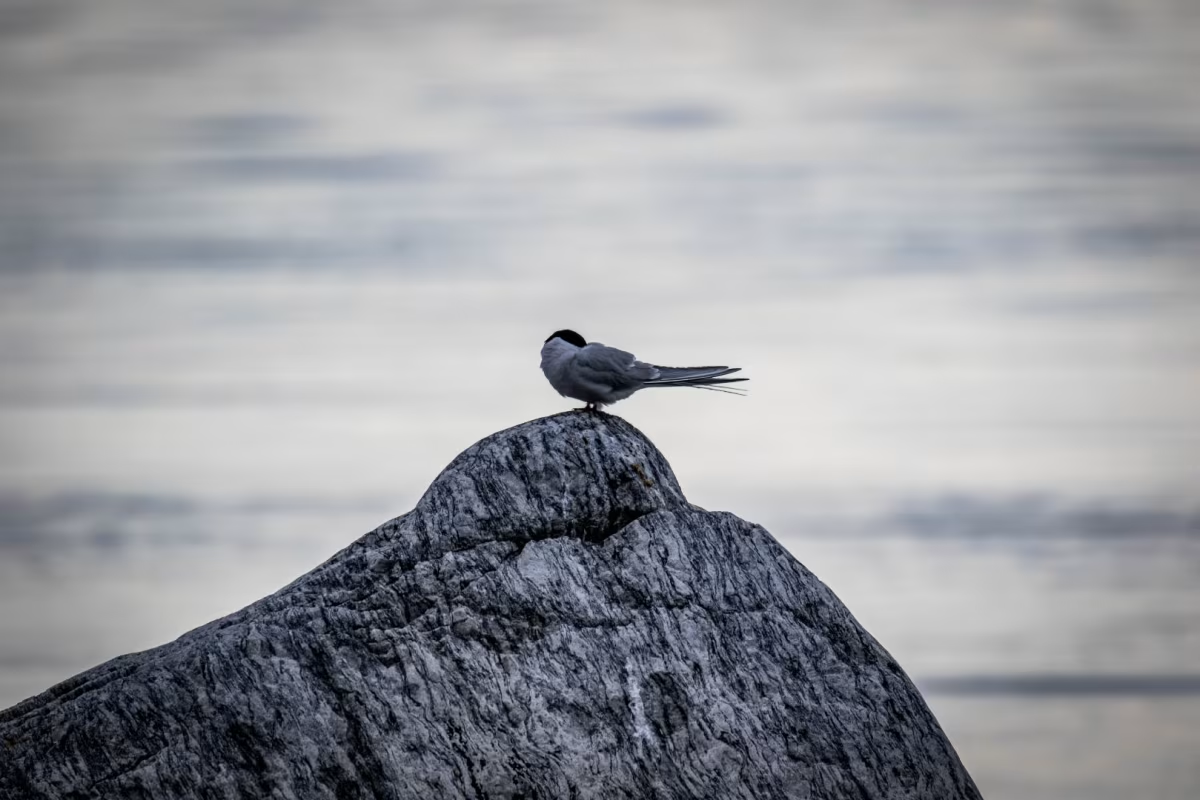
1. Puffin
Every class needs its clown, and these Arctic birds seem happy to oblige. But even though puffins are called “sea clowns” for their bright facial coloring, they’re also known as “little brothers of the north” for the black and white hue of their bodies. Many people think this resembles the garments of certain religious orders.
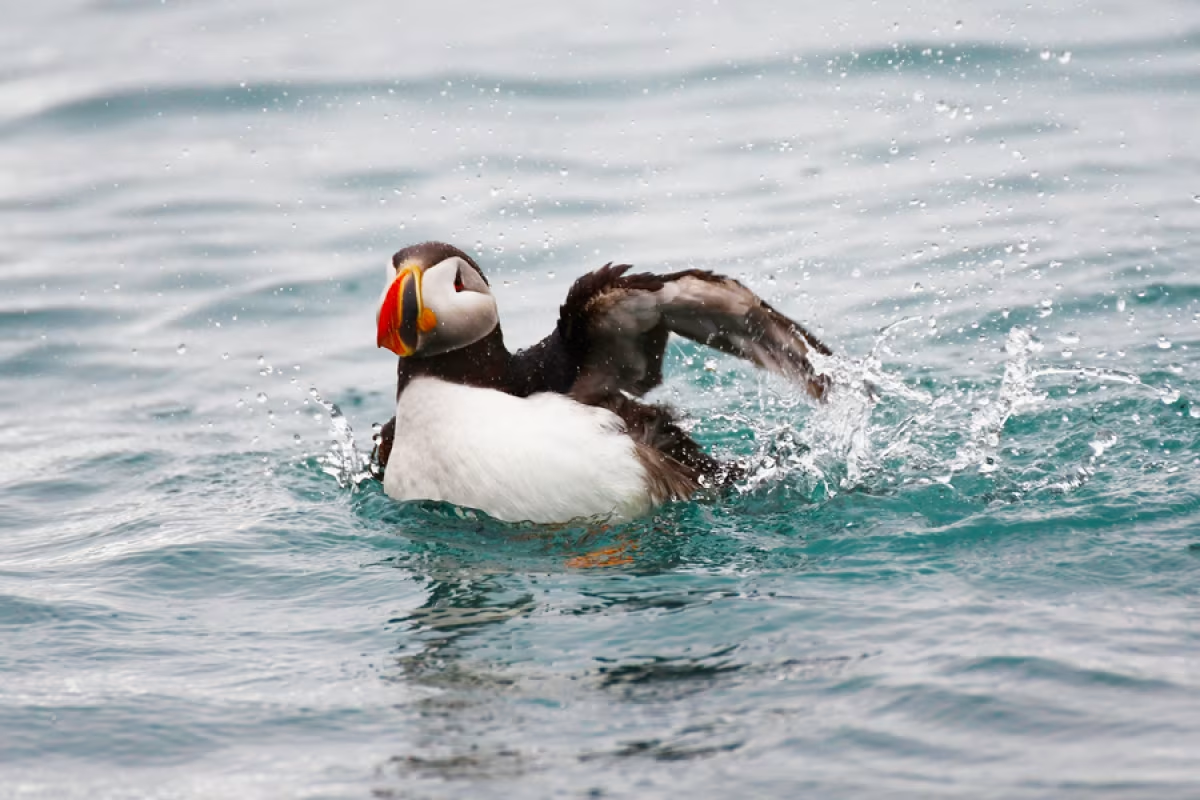
2. Cormorant
Some partnerships between humans and birds almost defy belief. There was a time when ancient fisherman would tie a loop around a cormorant’s throat, allowing it only room enough to eat smaller fish, while larger fish remained trapped in its bill – ripe for the taking. Fortunately, this is not the fate of the cormorants we see in the Arctic.
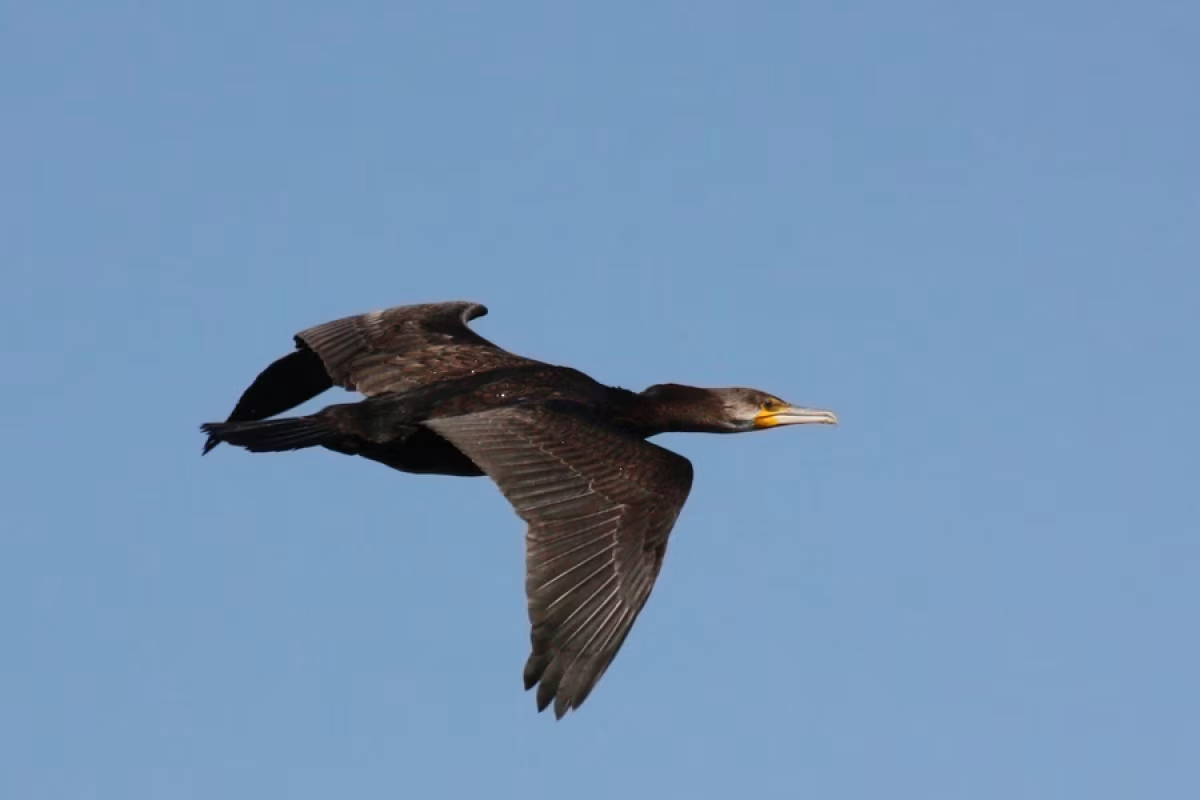
By Charlesjsharp via Wikimedia Commons
3. Arctic tern
No moss grows on this Arctic bird’s wings. One of the most far-ranging fliers in the world, Arctic terns travel an estimated 2.4 million km (1.49 million miles) in their lifetimes. Their migratory patterns are so ambitious, in fact, they get to enjoy two summers per year. You may see these Arctic birds during a Greenland trip, then see them on an Antarctica cruise the following season.
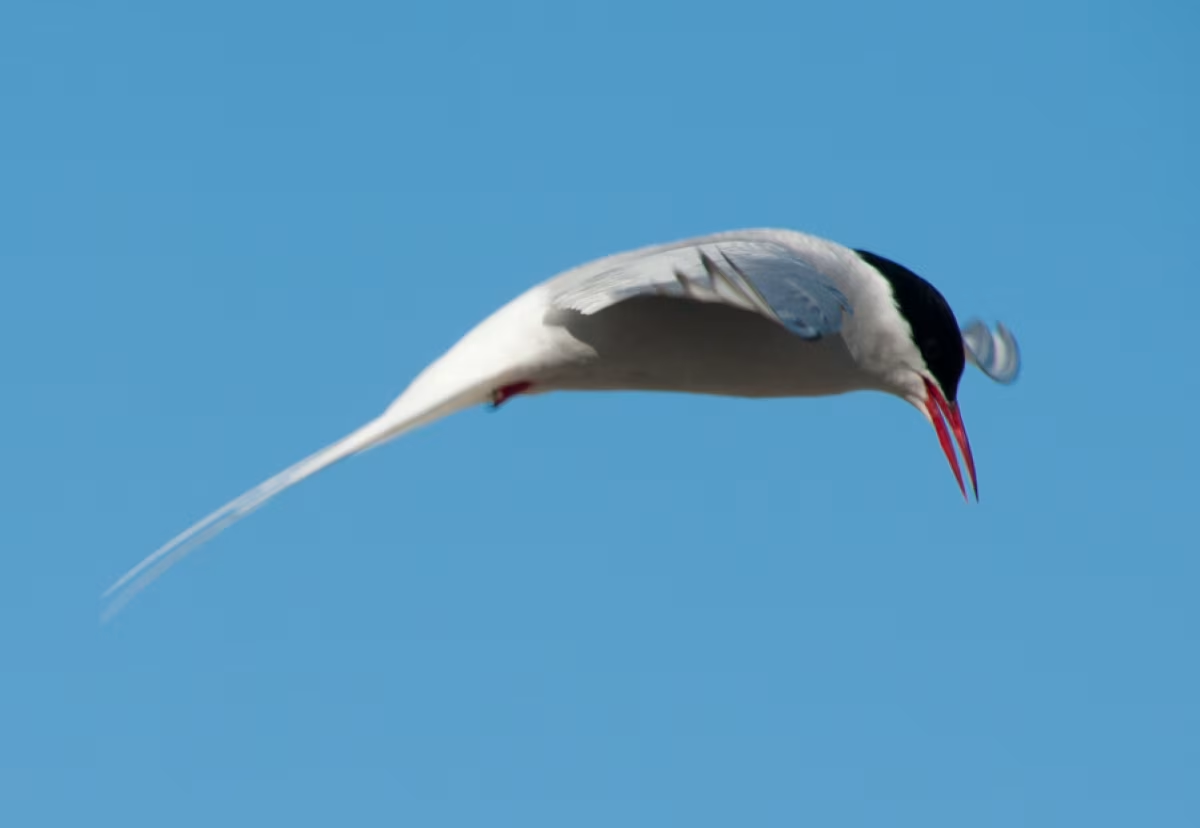
4. Common eider
These Arctic birds are also known as Cuddy ducks or St. Cuthbert’s ducks. Common eiders are large seabirds, or more accurately large sea ducks, measuring about 50 – 71 cm (20 – 28 inches) long and capable of flying up to 113 kph (70 mph). They breed in the far north, though during the winter common eiders head south, forming large flocks on the coastal waters of more temperate zones.
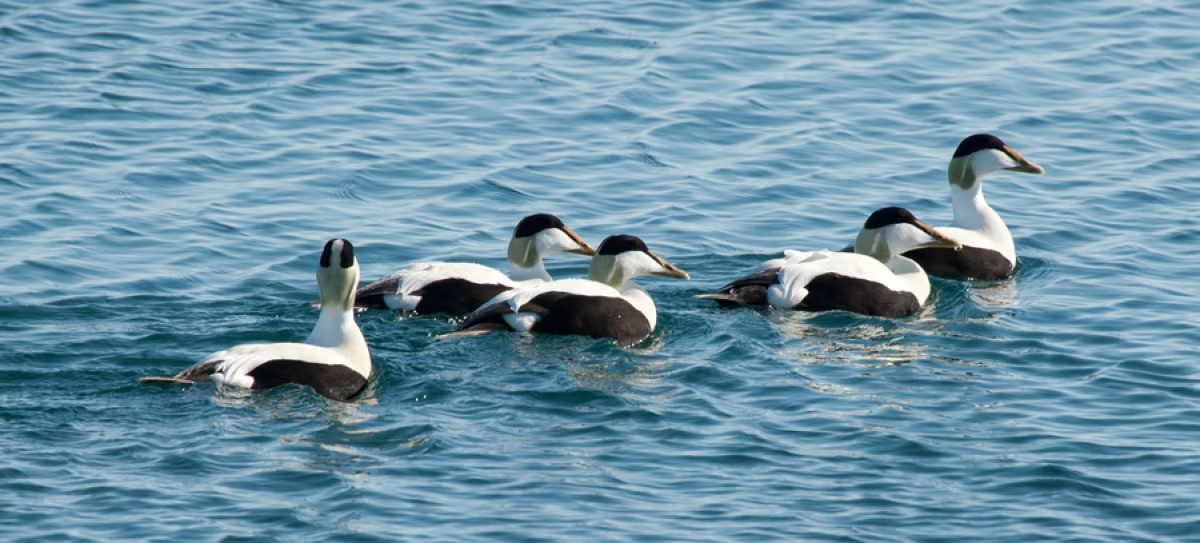
5. King eider
Not only are king eiders the largest sea ducks in the Northern Hemisphere, they also have a particularly expansive range. This might explain their Latin name, Spectabilis, meaning “remarkable display,” but actually it refers to the vibrant plumage of the males. Regardless of their regal status, these birds of the Arctic are true ducks of the people: King eiders don’t shirk from breeding with common eiders, and are known to form flocks up to 100,000 strong.
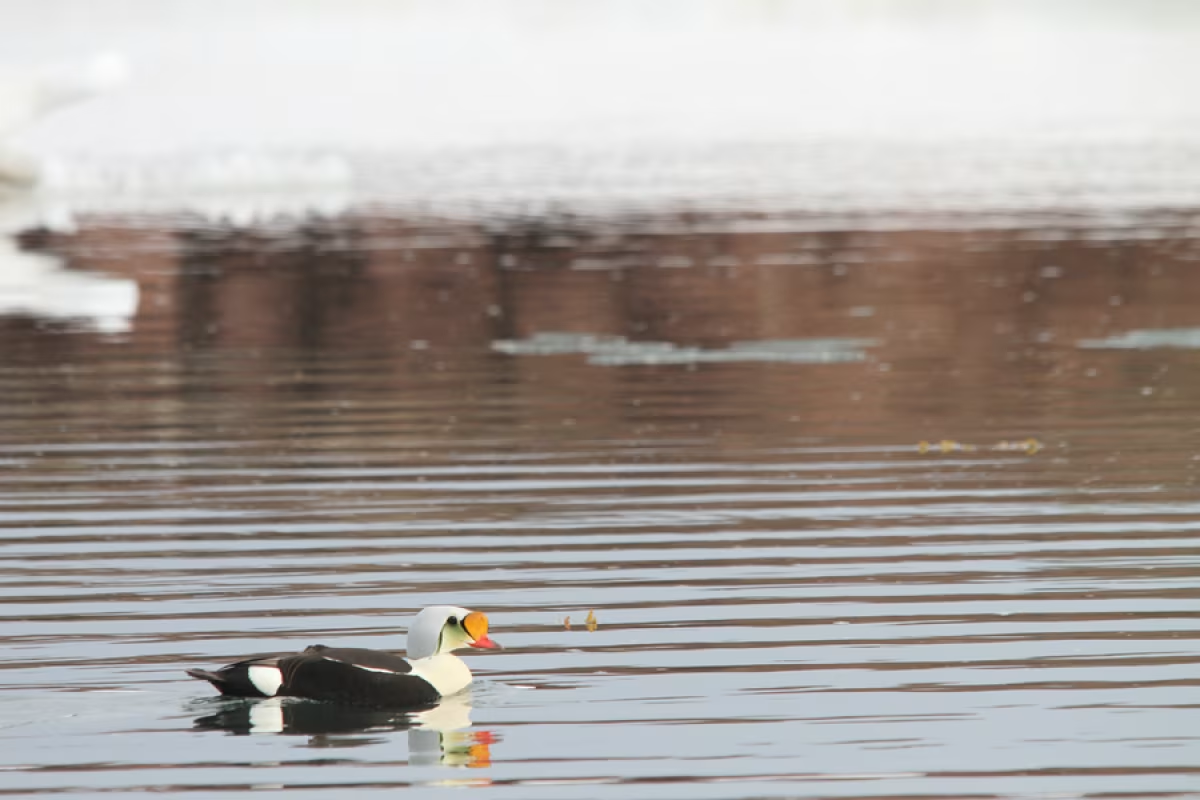
6. White-tailed eagle
The Arctic has several species of sea eagle, all beautiful and worthy of reverence. White-tailed eagles, however, are among the most distinct: They are the largest in Europe, have the widest wingspan of any eagle on the planet, and have no natural predators (other than humans). These Arctic birds are closely related to bald eagles, and indeed hold the same ecological niche in Eurasia that bald eagles hold in North America.
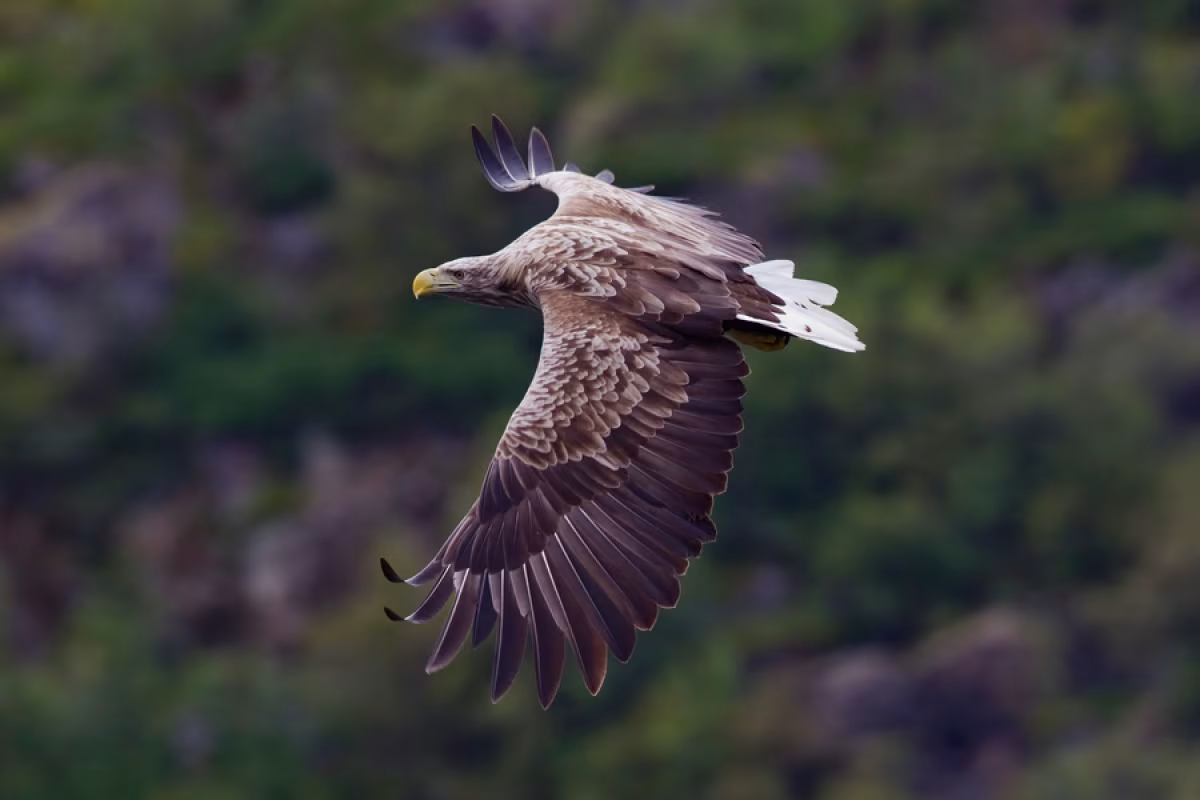
By Yathin S Krishnappa via Wikimedia Commons
7. Kittiwake
It should come as no shock that the Arctic bird seen most on the standard Arctic cruise is also the most abundant gull on Earth. Kittiwakes get their name from their own repetitious cry. They’re often seen calling out from the cliffsides, where their chicks are usually safe from predators as long as they don’t fall out of the nest. Indeed, kittiwakes are the planet’s only gull-like birds to nest on the sides of cliffs. It pays not to be scared of heights.
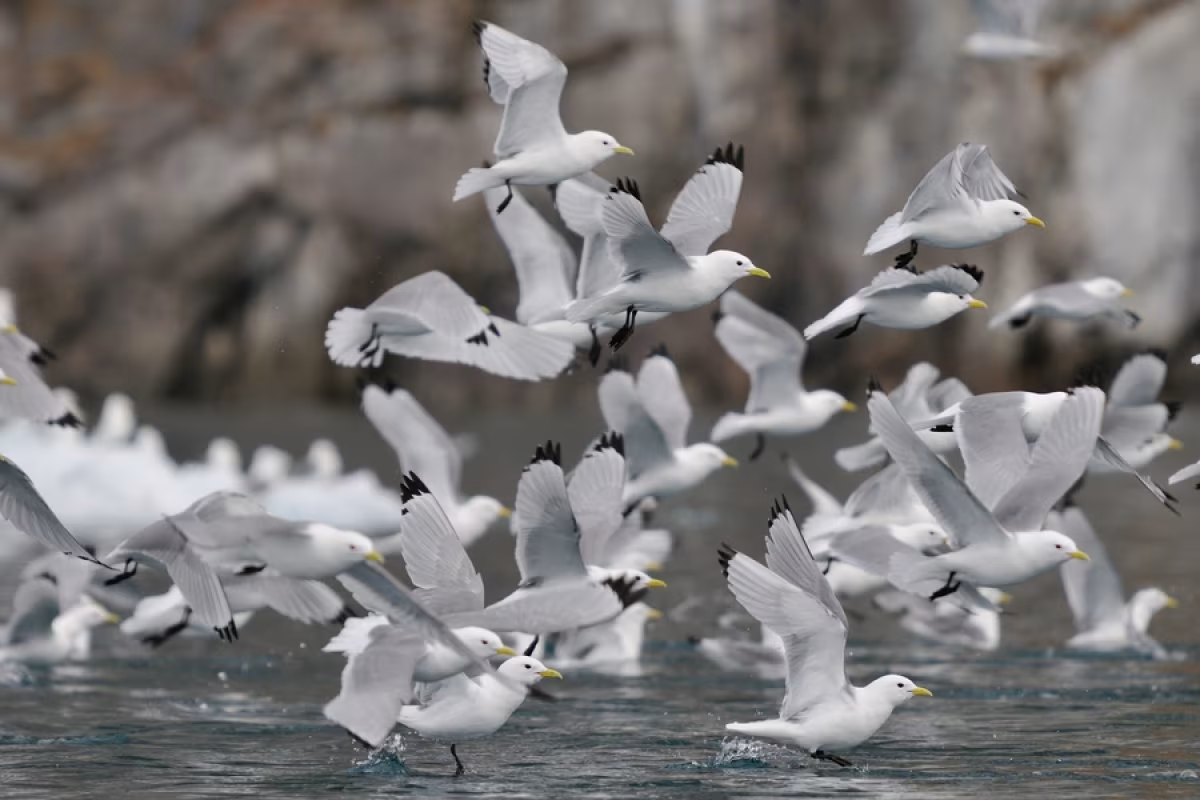
8. Fulmar
Though there’s no accounting for taste, the ancient Norse certainly had no kind words for these oil-excreting Arctic birds: Fulmar translates to “foul gull.” This title refers to the animal’s pungent stomach oil, a spray that can be used as a defense mechanism or energy source for their young – or themselves, during long flights. But despite how smelly they can be, these Arctic birds are equipped with a keen olfactory sense.
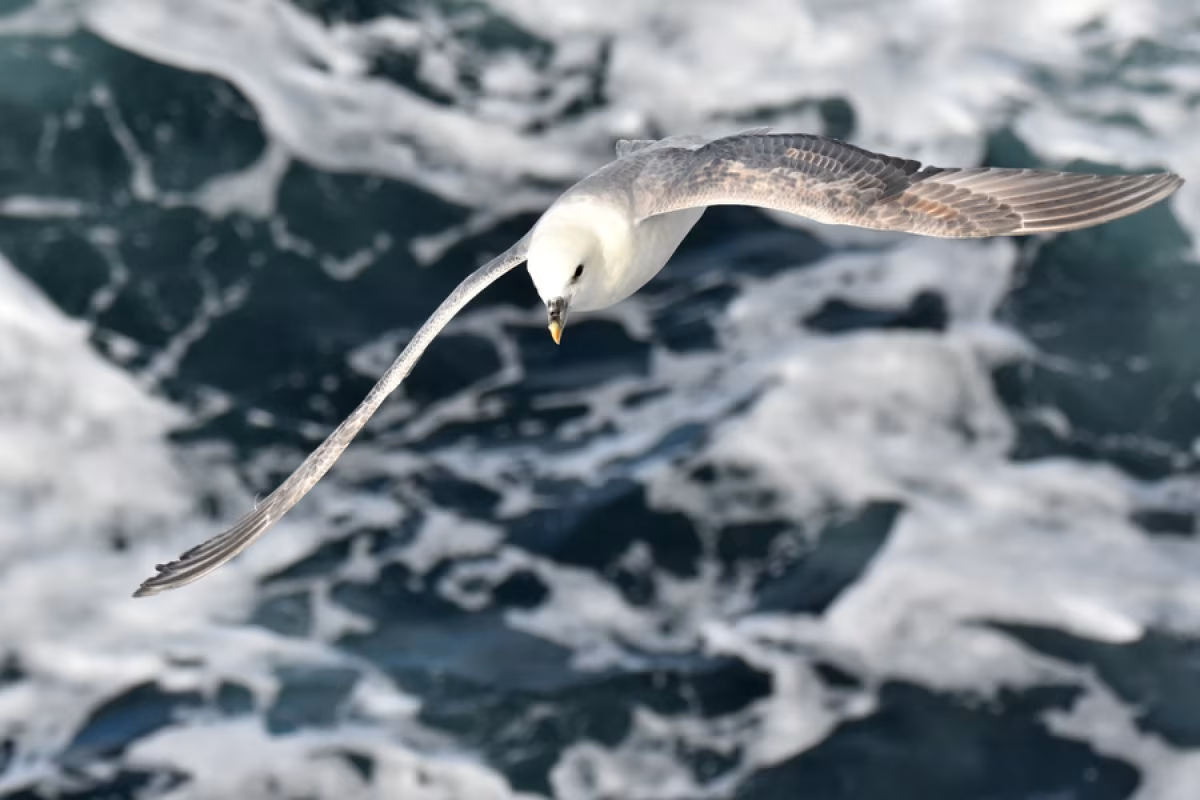
9. Snow bunting
Some Arctic birds are fierce, some fleet, and some are nicknamed “snowflake.” Even with its cutesy callsign, snow buntings are sturdy survivors. They are the northernmost breeder among land-based birds, inhabiting any patch of tundra not coated in ice. These birds are also not picky when it comes to propagating their species, quite content to cross-breed with Beringian McKay’s buntings in Alaska when necessary.
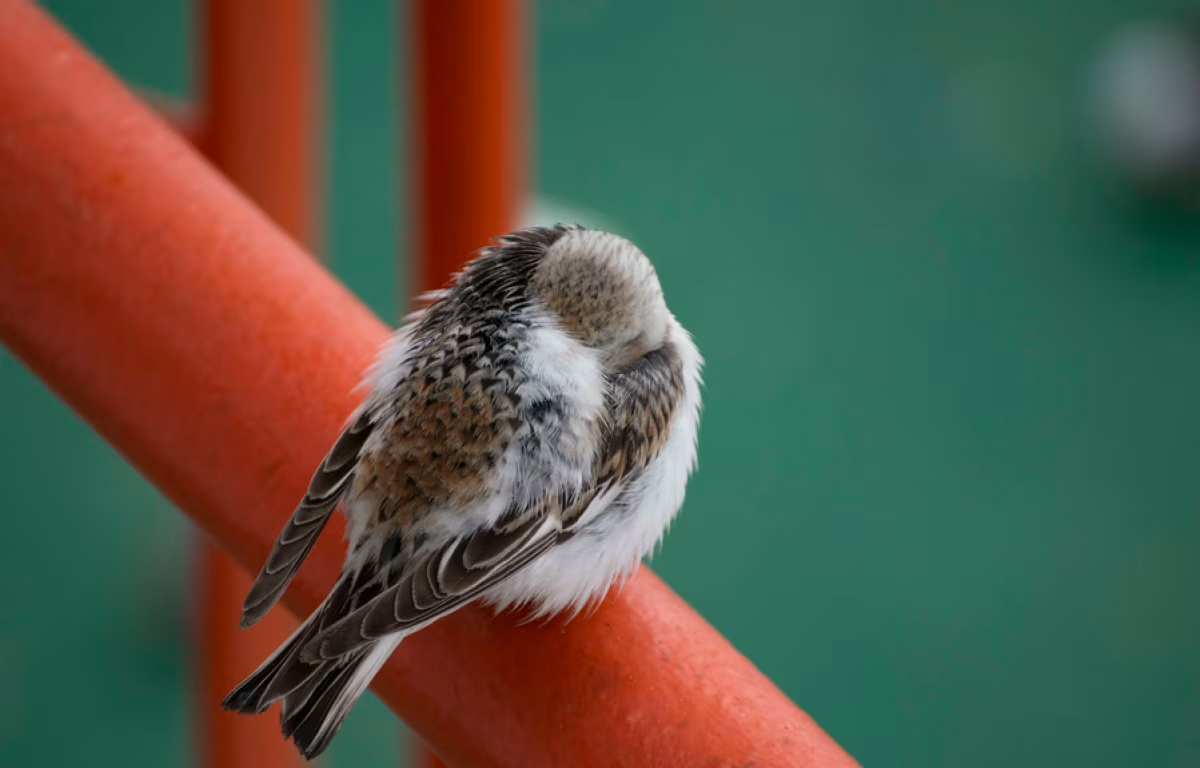
10. Northern gannet
Not all of us have mastered the art of walking, and some never will – unless it’s on water. Northern gannets fall into this category, finding it easier to achieve lift-off from a watery surface than a dry one. These Arctic birds are nevertheless efficient, born with small air bags under their skin that protect them during their high-impact dives and help them resurface. Also, they like to eat: The word “gannet” is a substitute for “glutton” in the UK.
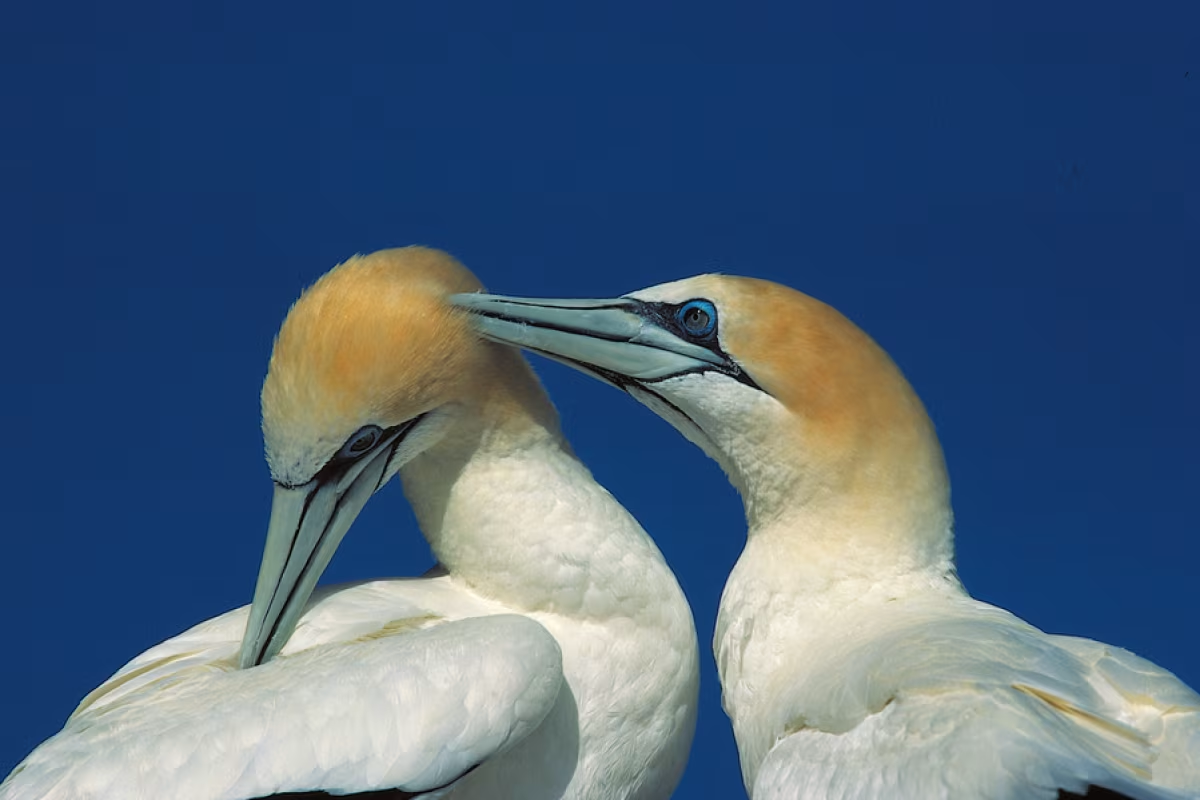
11. Sanderling
These small Arctic wading birds are similar to sandpipers and dunlins in appearance, and are in fact a type of stint, or small sandpiper. Sanderlings are known for the bicycling motion their legs make as they run along the beach in search of food, which is usually invertebrates like small crabs. These circumpolar birds are also very migratory, flying up to 10,000 km (6,200 miles) between Arctic breeding grounds and southerly wintering sites.

By Charles J Sharp [CC BY-SA 4.0], via Wikimedia Commons
12. Black guillemot
One of the more stylish Arctic birds, black guillemots are known to change their colors to match their environments: The farther north a guillemot is found, the whiter its plumage will be. They’re also particular about how they hold fish in their beaks. This trait is still unexplained, though some think it is related to where these birds like to hunt.
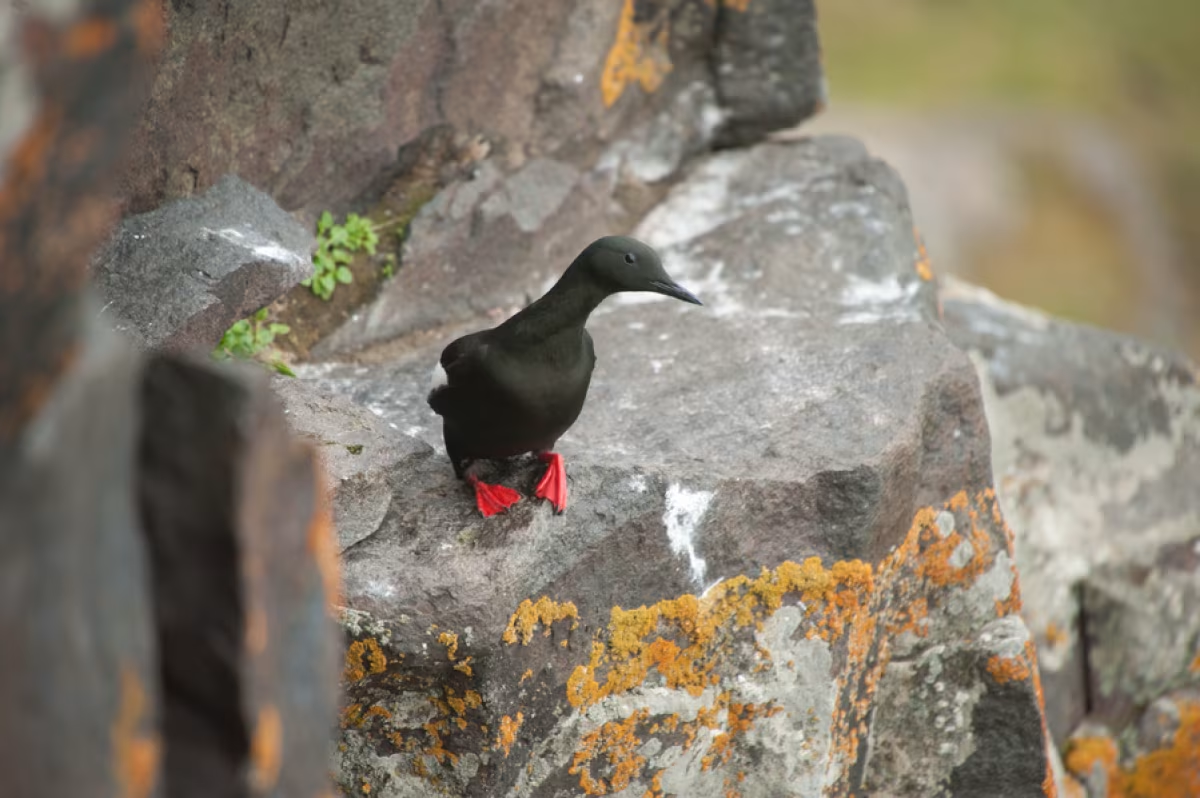
13. Brünnich’s guillemot
No bird spends more energy in flight than a Brünnich’s guillemot, but this Arctic bird makes up in numbers what it lacks in efficiency. It is among the most numerous bird species in the Northern Hemisphere. Brünnich’s guillemots are also tough divers, plunging to depths of up to 150 meters (500 feet) and staying underwater for upward of four minutes. Biologists think these Arctic birds absorb gasses into their bones that they release into their bodies during a dive, preventing diving sickness and lung collapse.
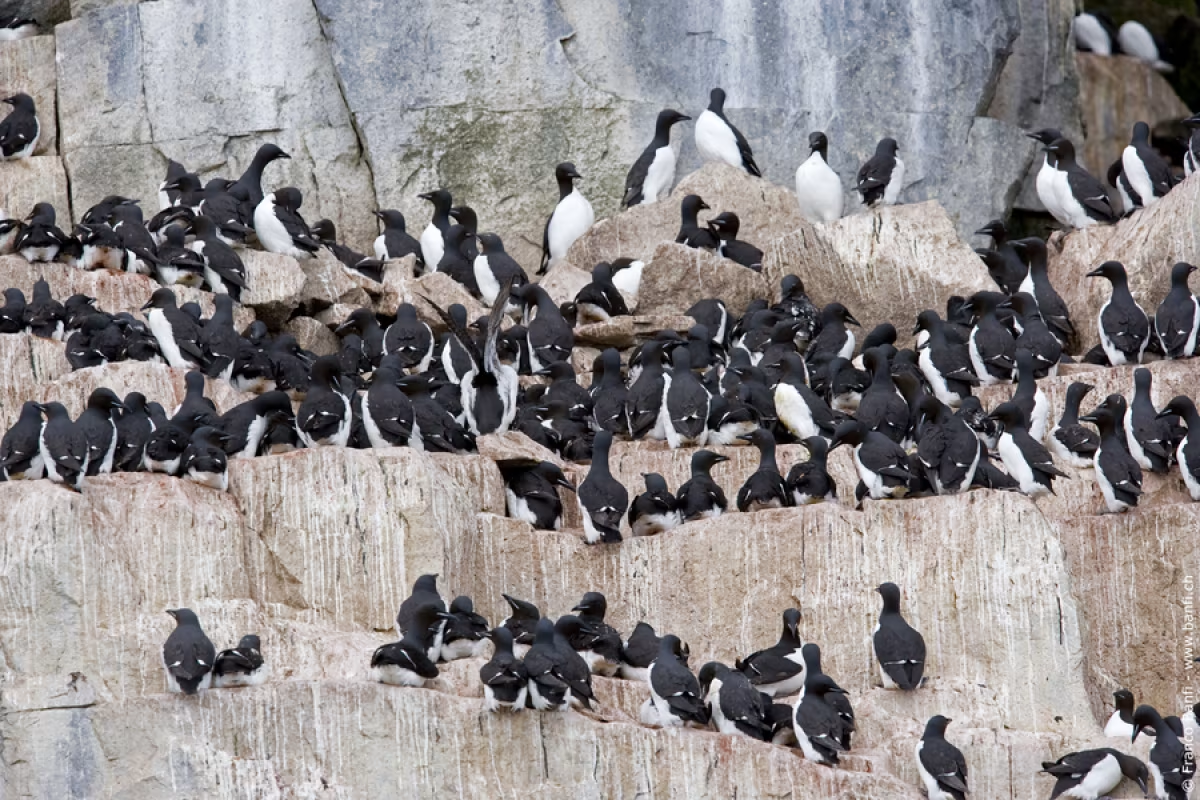
14. Little auk
Just as kittiwakes are the most common Arctic bird seen in the far north, little auks are the bird you will see most during a Svalbard cruise. Their colonies, which sometimes number into the millions, are the largest of all the auks. The sheer size of little auk populations actually has a significant impact on their breeding grounds, as the carpet of droppings these birds put down provides a nutrient-rich fertilizer that allows plant life to grow in what would otherwise be barren earth.

15. Arctic skua
These Arctic birds give new meaning to the term “five-finger discount.” Known for their skill at thievery, Arctic skuas are thought to support up to 95% of their winter diet by stealing. Not only that, these birds like to add injury to their insults, roughing up the birds they steal from to get them to drop food.
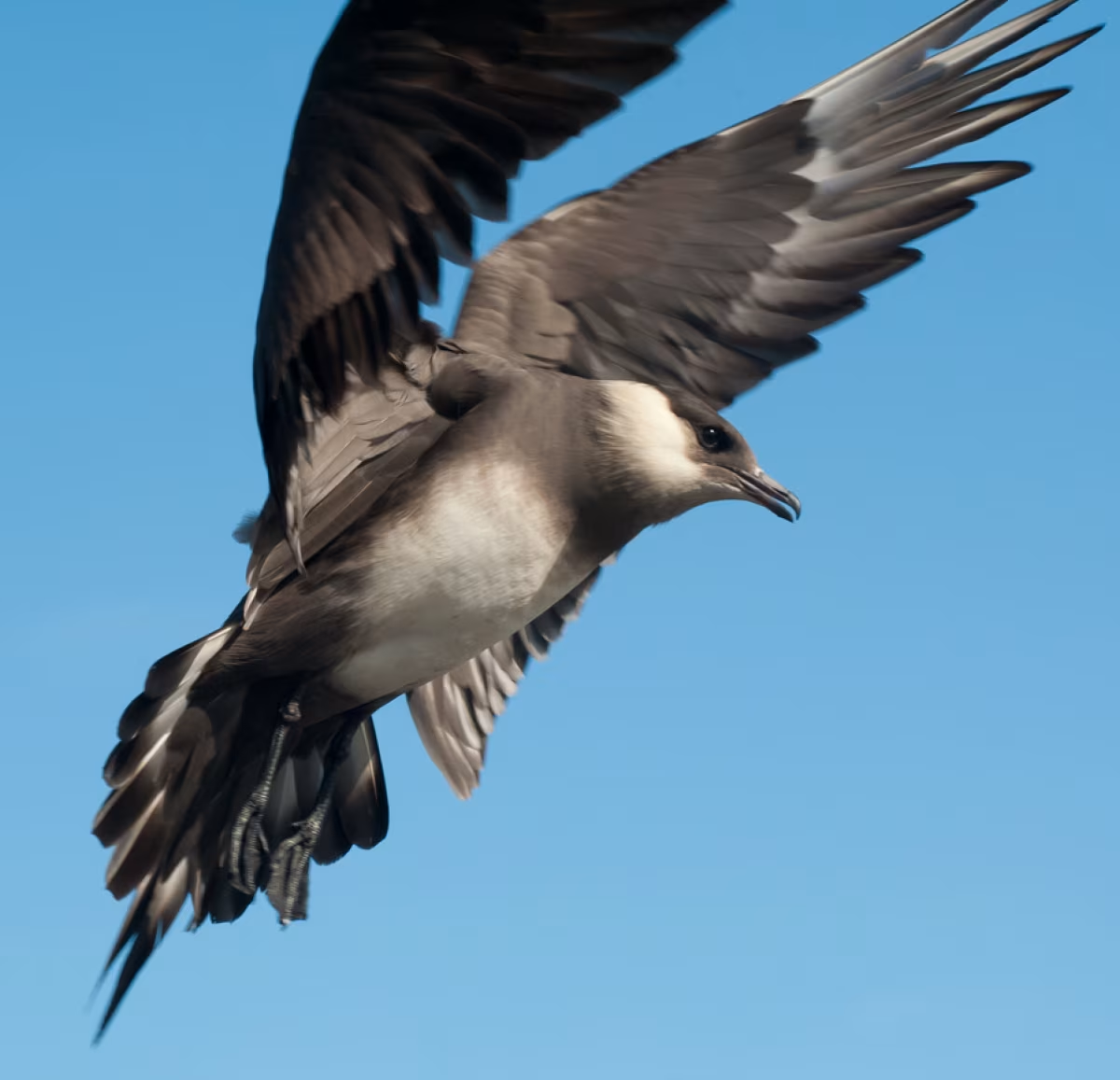
16. Long-tailed skua
The smallest of the skua family but not the least aggressive, long-tailed skuas are known to make other Arctic birds drop their food by harassing them (like Arctic skuas.) During the breeding season, long-tailed skuas hunt for rodents, swooping down on their prey and pecking them to death – not the most humanitarian manner of pest control.
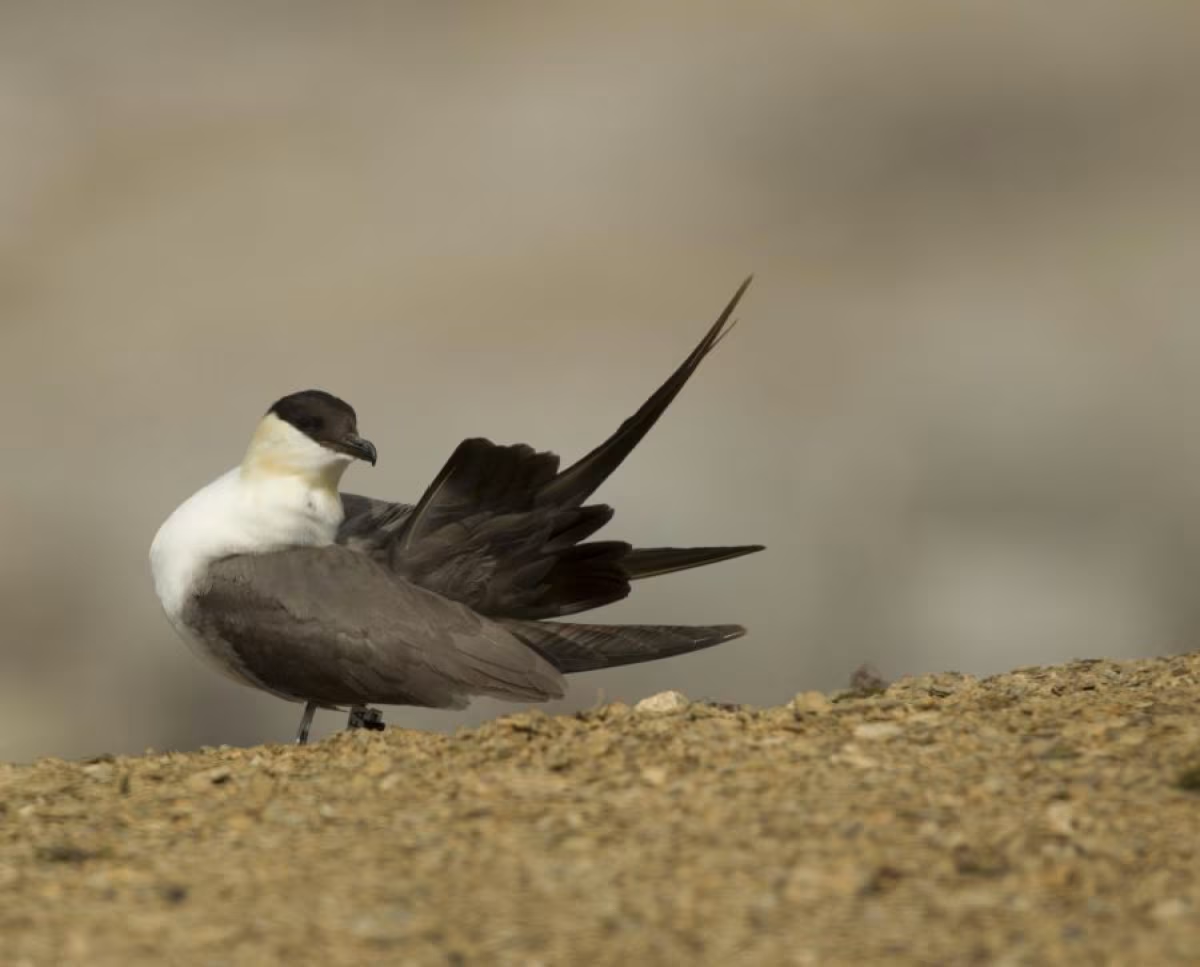
17. Ptarmigan
Known as “rock ptarmigans” outside the UK and Canada, these grouse relatives go by many other names: The Japanese call them “thunder birds,” the Greeks “hare feet,” they are known as “croakers” in Gaelic, and in America this Arctic bird sometimes goes by “snow chicken.” Male ptarmigans are known for their croaking song.
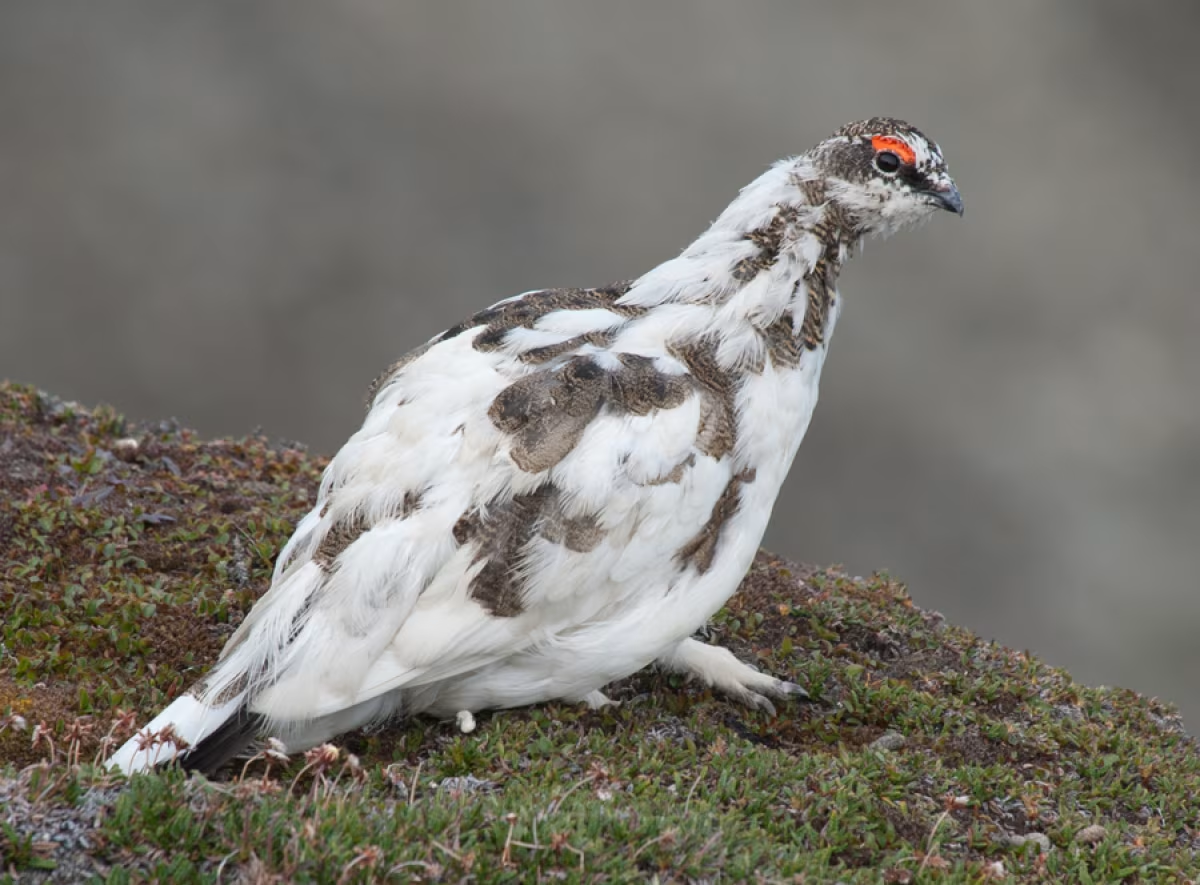
18. Great northern diver
Twenty million years is a long time by any reckoning, and that’s how long scientists believe the great northern diver has been with us. The oldest and most primitive bird on Earth, great northern divers are different than most birds in that some of their bones are solid rather than hollow. This gives these Arctic birds helpful weight when they dive, though it also impedes them when they take to flight.

By P199 (Own work) [CC BY-SA 2.5], via Wikimedia Commons.jpg
19. Red-throated diver
Also known as red-throated loons, these Arctic birds are the most widely distributed of the diver family. Red-throated divers grow to around 55 – 67 cm (22 – 26 in) long, the smallest subspecies of diver, and primarily breed in the Arctic. Their red throat patch grows more vibrant during breeding season, and the rest of the year turns grayer. Due to their threatened status, red-throated divers are protected by international treaties.
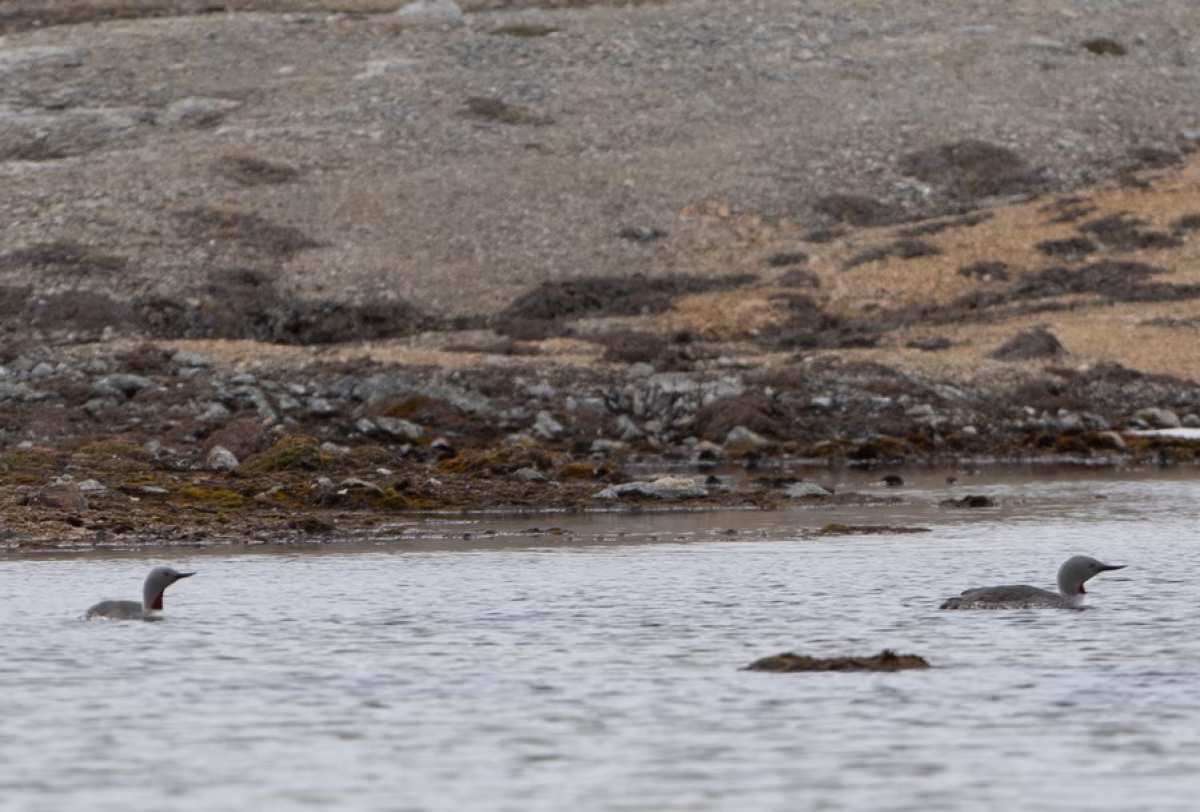
20. Glaucous gull
The only large gull found in the farthest reaches of the north, groups of this Arctic bird are known by many creative names: squabbles, screeches, scavengings, gulleries. This is not surprising, as glaucous gulls are scavenging birds known to raid other bird colonies in search of eggs and chicks. They will also hover above humans and foxes, hoping a distraction will enable them to snatch up their prey without interference.
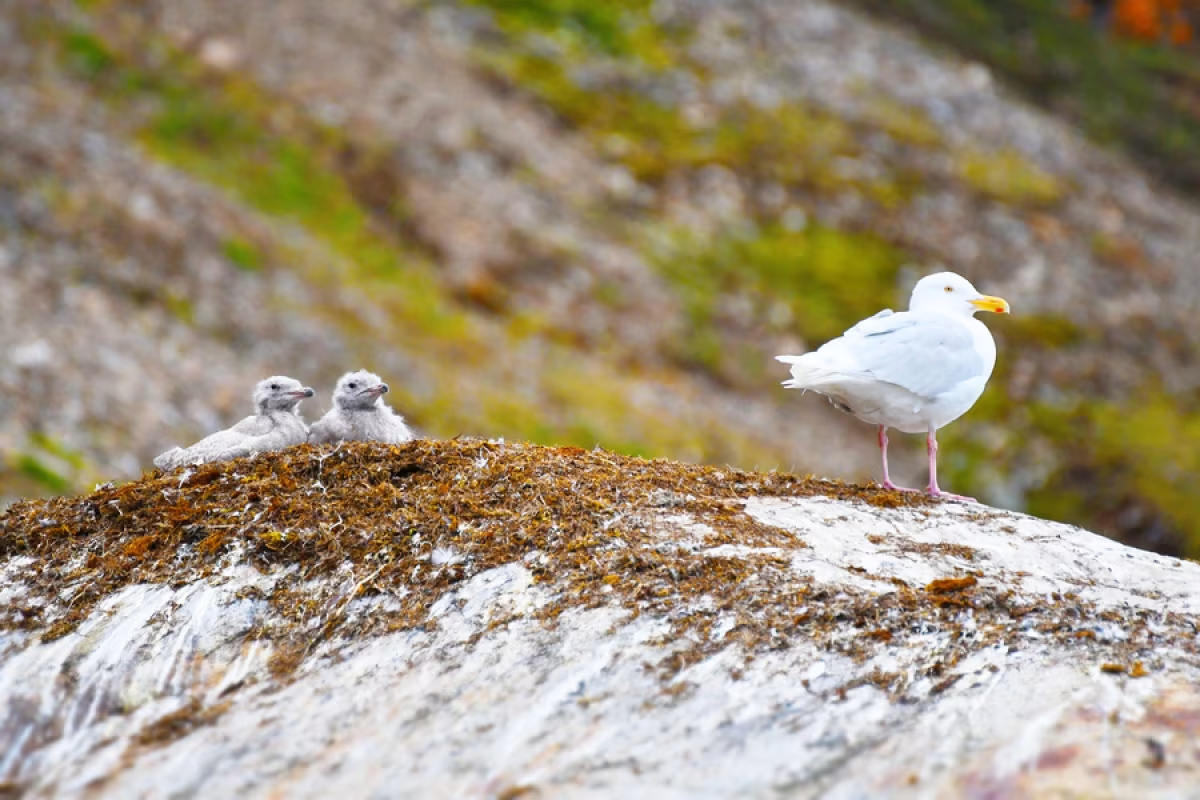
21. Lesser black-backed gull
We tend to encounter lesser black-backed gulls in Iceland where they breed, though these Arctic birds also nest along Europe’s Atlantic coastlines. They survive on a diet of fish, crustaceans, insects, worms, mollusks, starfish, seeds, small mammals, berries, eggs, chicks, scraps, offal, and carrion – basically anything these birds can find, like most gulls.
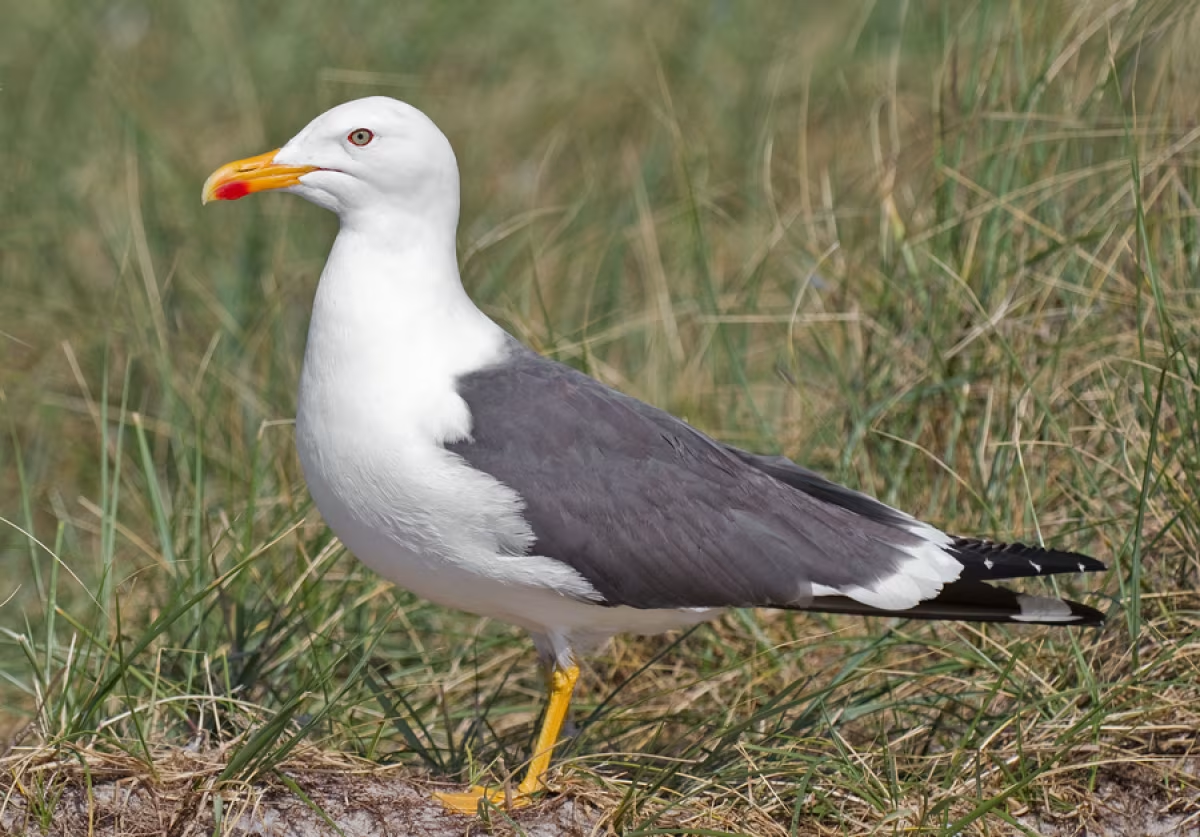
By Andreas Trepte [CC BY-SA 2.5], via Wikimedia Commons
22. Great black-backed gull
These distinctive birds, being the largest gulls in the world, have a wingspan of up to 1.7 meters (5 feet, 7 inches) and grow to about 64 – 79 cm (25 – 31 inches) long. Great black-backed gulls are found in the Arctic locations of Iceland, northern Russia and Scandinavia, and southern Greenland, wintering as far south as Florida. They are also scavengers, eating nearly anything they can swallow.
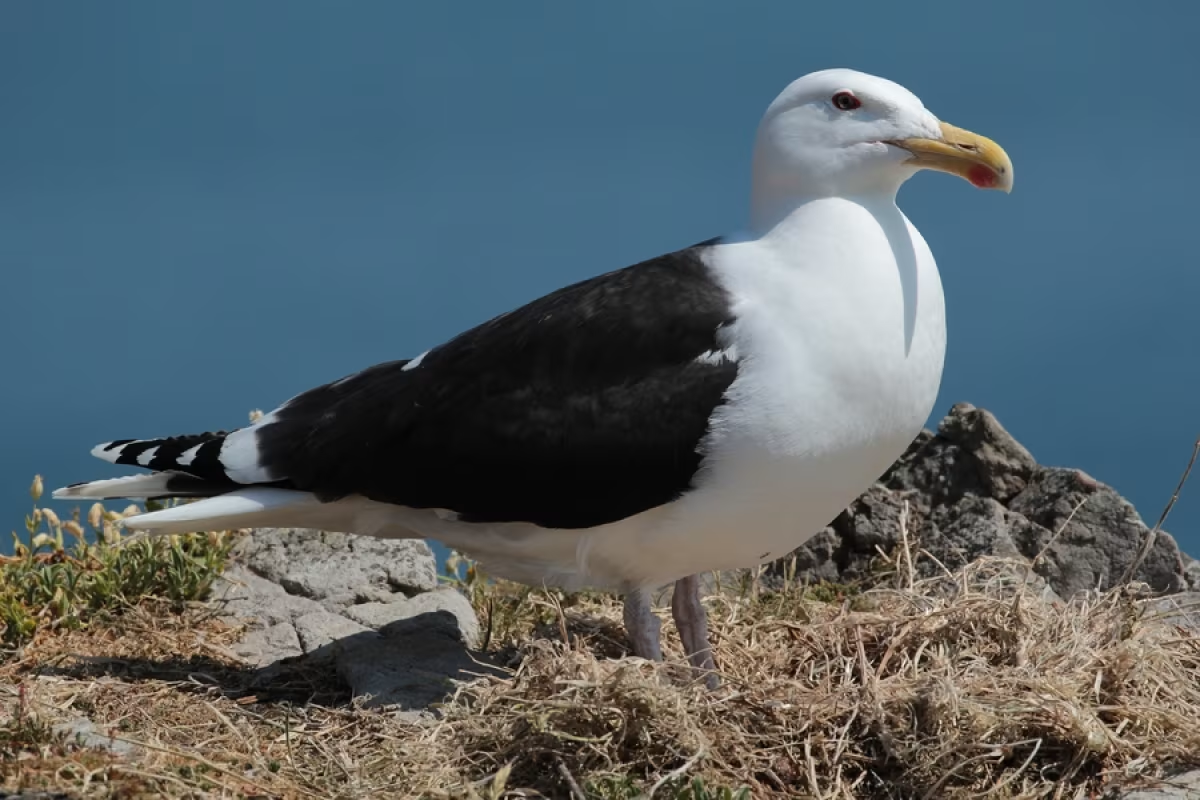
By Irish Wildlife Trust Dublin Branch [CC BY-SA 4.0], via Wikimedia Commons
23. Ivory gull
Tapering off in population since the 1980s, ivory gulls are estimated to have lost as much as 85% of their population in Canada alone. They are the planet’s most pollution-impacted bird, laying eggs that have the highest concentrations of DDT and PCB of any bird on Earth. They are pellet-casting birds, producing small nuggets from the animals they eat and spitting them back up after they’re done. Etiquette in the Arctic has a loose interpretion.

24. Red phalarope (grey phalarope)
Red phalaropes are wading birds most of the year, and during the winter tend to spend their time on the ocean. Called grey phalaropes in Europe, these Arctic birds eat lice off the backs of whales. After breeding, females migrate south and leave the males to incubate the eggs and raise the chicks. Even more atypically, the female red phalarope is bright and colorful while the stay-at-home dad is less vibrant.
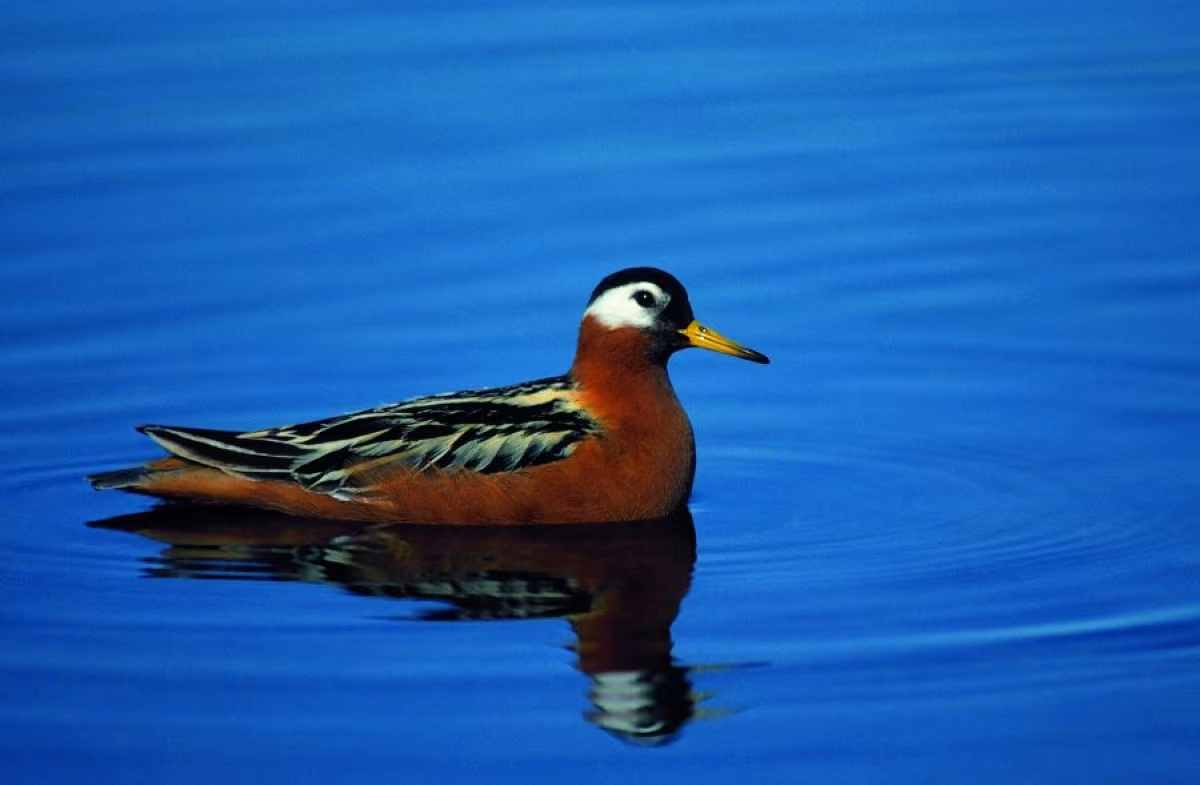
25. Pink-footed goose
The most common goose in the Arctic archipelago of Svalbard, the pink-footed goose unfortunately leaves a large carbon footprint by releasing gas from the ground while digging for food. Pink-footed geese are Svalbard’s largest nesting goose, and due to their size are better able to protect their young from Arctic foxes than other geese. This enables these Arctic birds to nest farther inland.
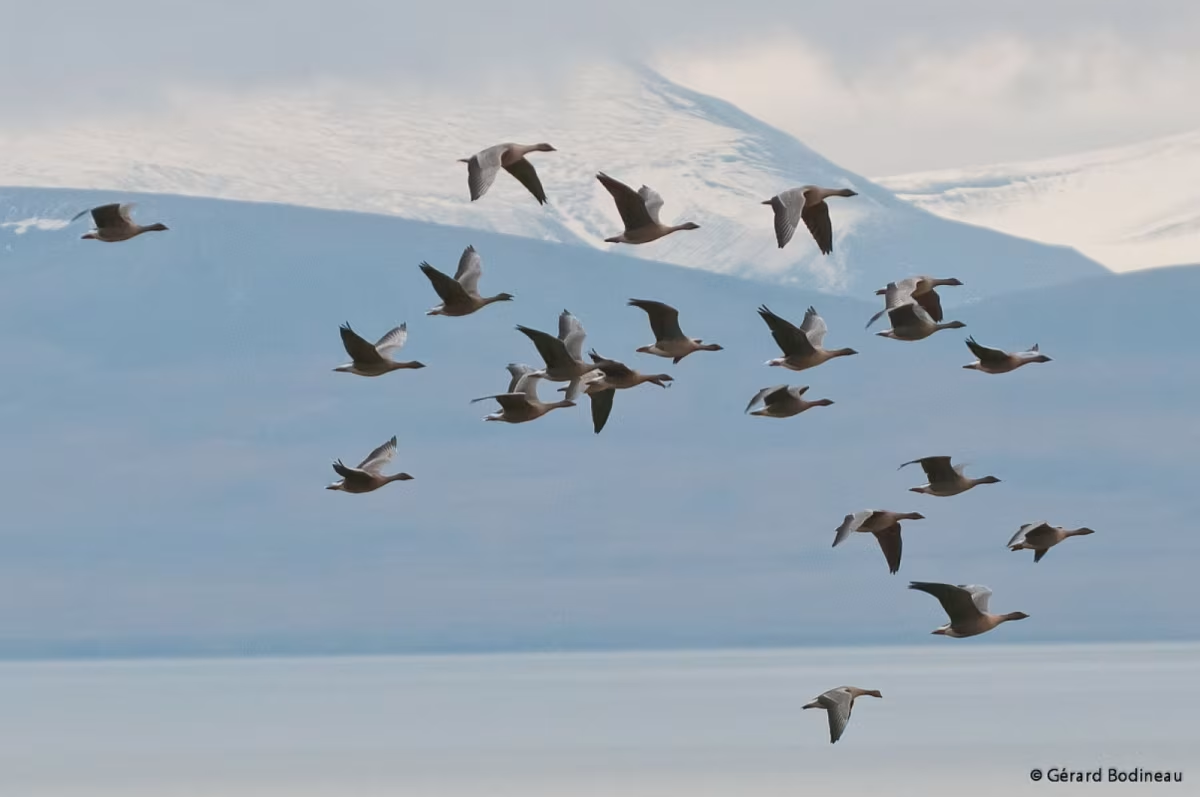
26. Barnacle goose
Medieval animal lovers thought barnacle geese were born from barnacles, hence the name. These Arctic birds were also believed to come from driftwood, and for this reason some Irish clerics permitted their meat to be eaten during Catholic fasting days. But Pope Innocent III did not share their view, putting an end to this practice in 1215.
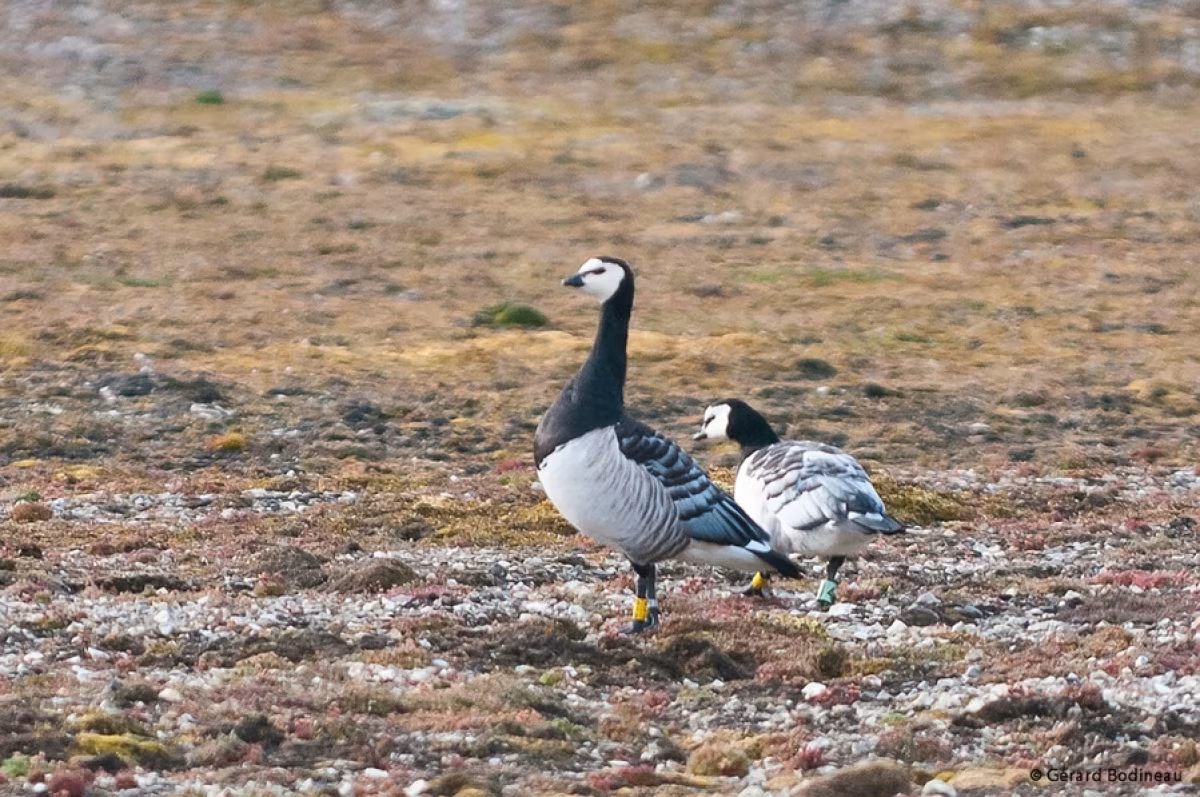
27. Brant goose
Also called the brent goose, this Arctic bird is a coastal breeder that feeds on seaweed, eel grass, and sea lettuce. We sometimes see brant geese in Iceland, Svalbard, and on some of our Northern Norway trips. They are small birds, about 55 – 66 cm (22 –26 inches) long, and have short bills. Like barnacle geese, these birds were thought in the Middle Ages to be related to crustaceans.
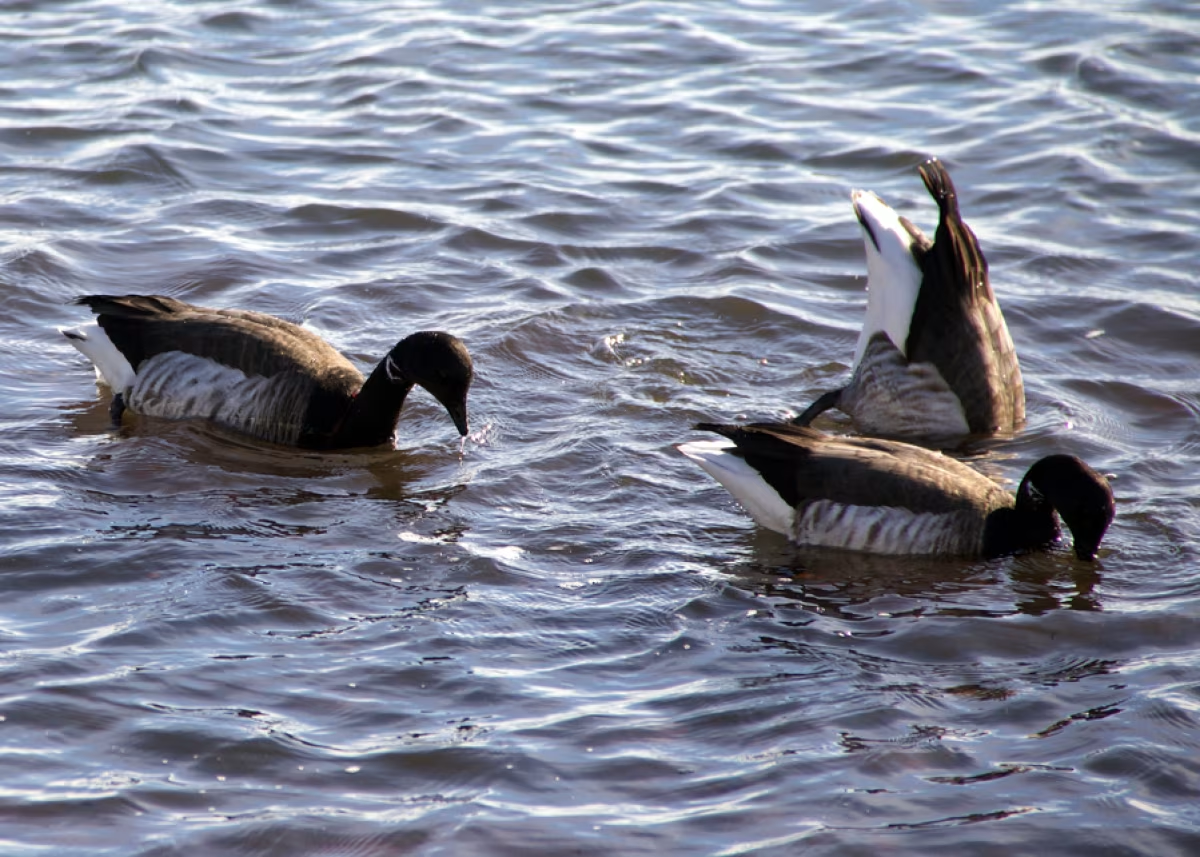
By Adam Shaw [CC BY-SA 4.0 (https://creativecommons.org/licenses/by-sa/4.0)]
28. Razorbill
These Arctic seabirds are members of the auk family and the closest living relatives of the now-extinct great auk. During their breeding period, we see razorbills along the coastlines of Iceland and eastern Greenland, while during the non-breeding season they can sometimes be seen in Northern Norway as well. Razorbills live on a diet of mid-water schooling fish, and their predators include polar bears, Arctic foxes, and other seabirds.
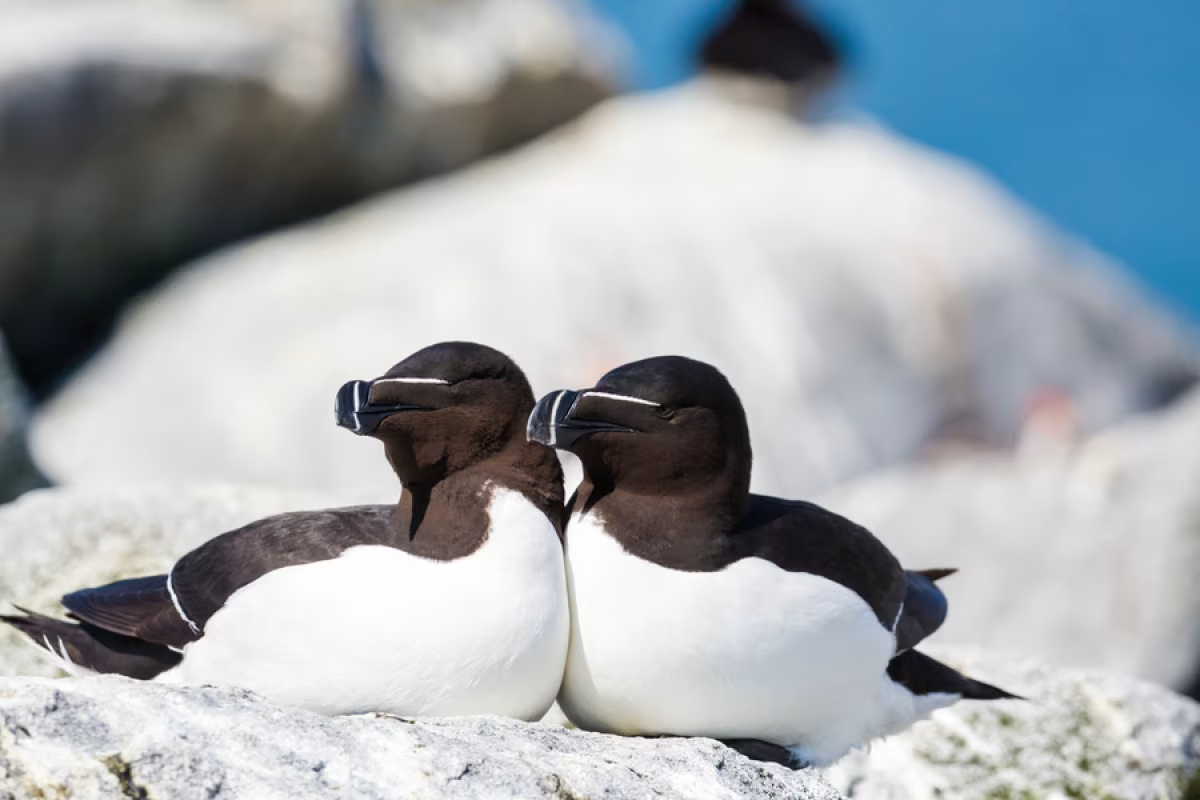
By Melissa McMasters from Memphis, TN, United States [CC BY 2.0], via Wikimedia Commons
29. Turnstone
Last listed but not least loved, turnstones are one of the migratory marvels of the Arctic bird world: They’ve been known to fly over 1,000 km (600 miles) in a single day, 27,000 km (16,700 miles) in a year, and 500,000 km (310,000 miles) over their entire lives. Turnstones live so far north that scientists can rarely study them, though they know these birds lower their tails and hunch their backs before a fight. When you travel as much as a turnstone, it’s important to stand your ground.
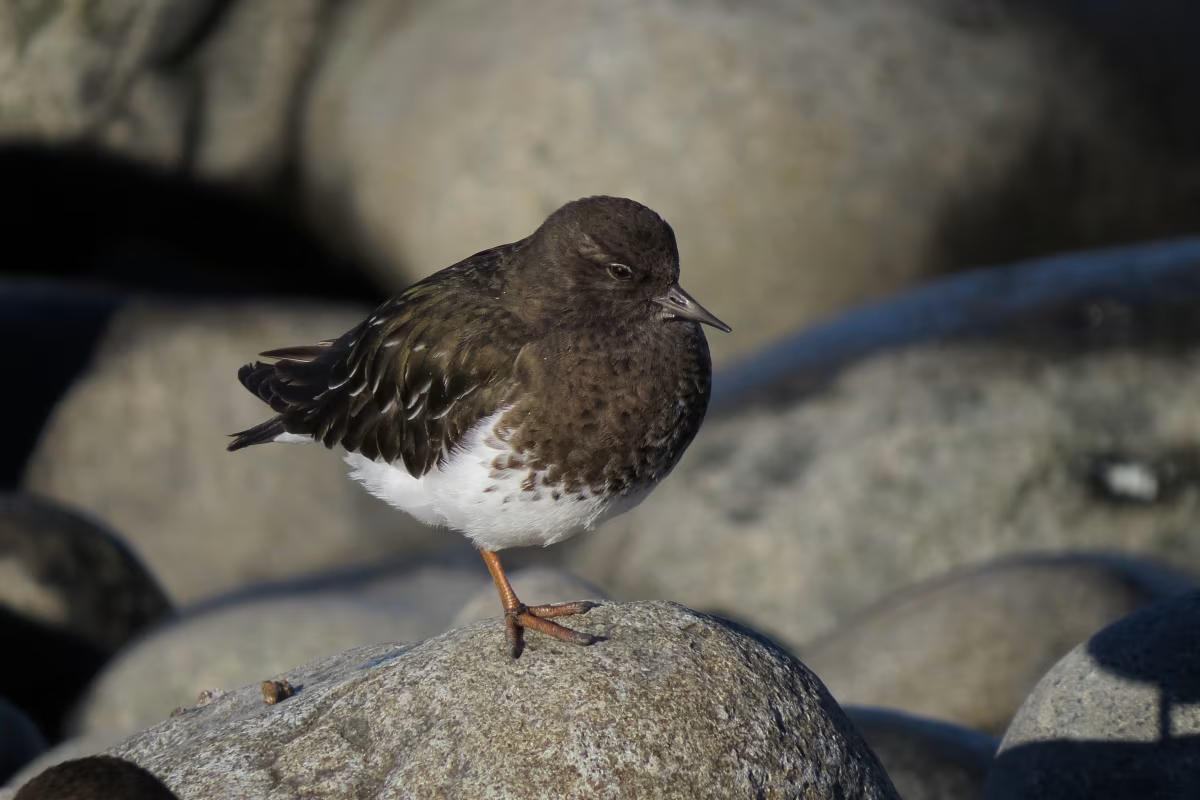
Birdwatching tours for Arctic bird lovers - plus a bonus bird video
Interested in seeing any of these beautiful birds in their natural habitat? Then check out our exciting list of Arctic bird-watching tours that will give you that chance.
And if you’re still craving more Arctic bird images, don’t miss the bird-filled video below:
